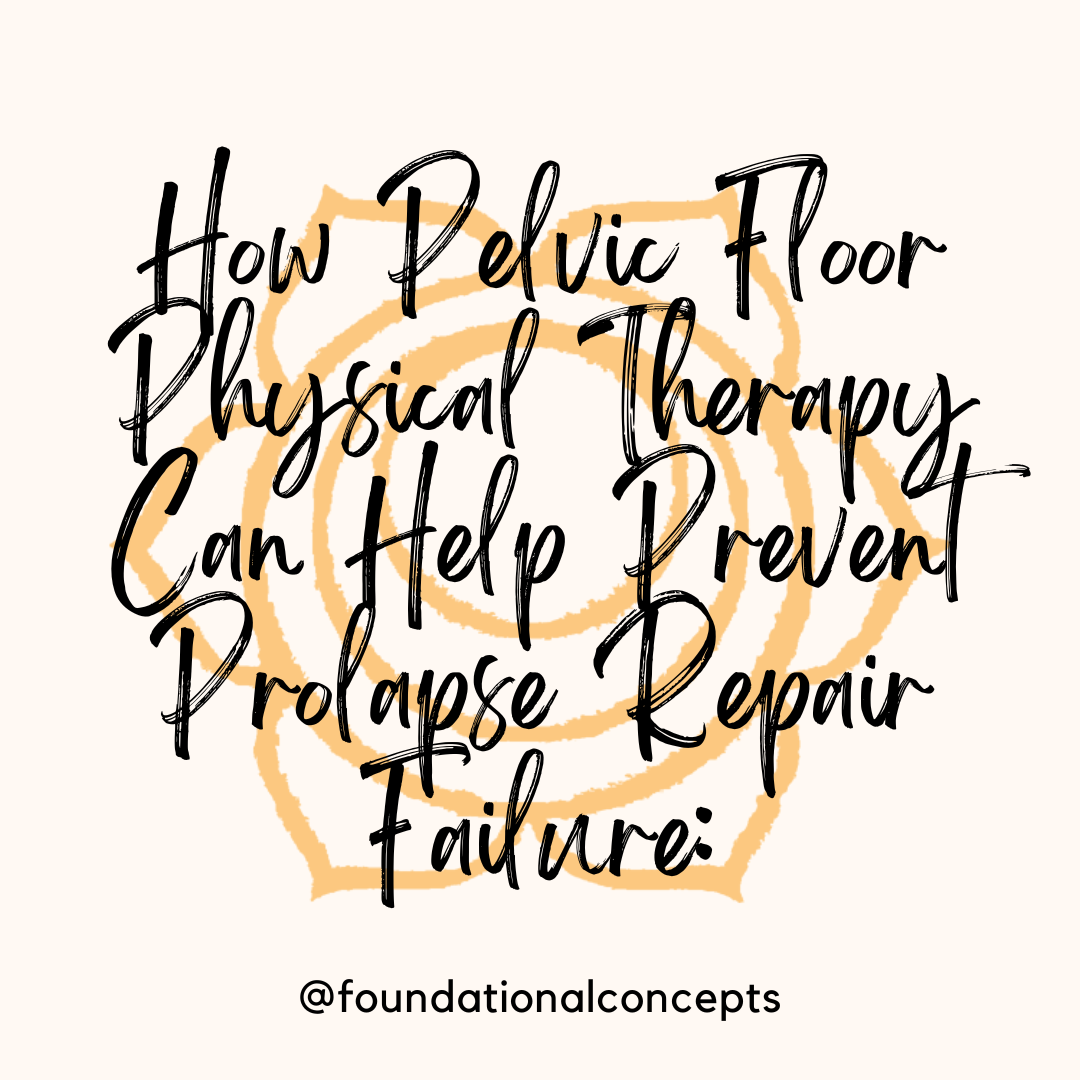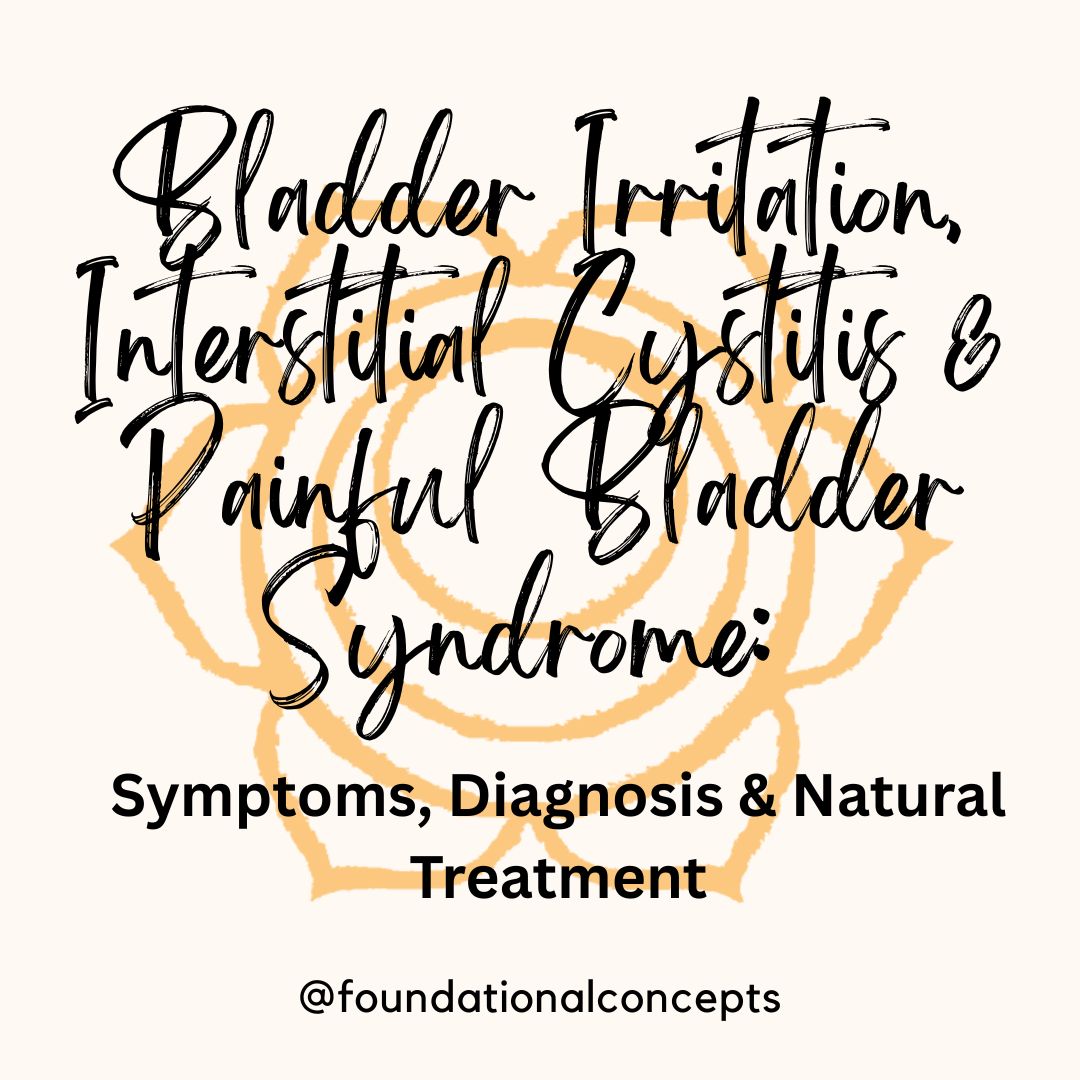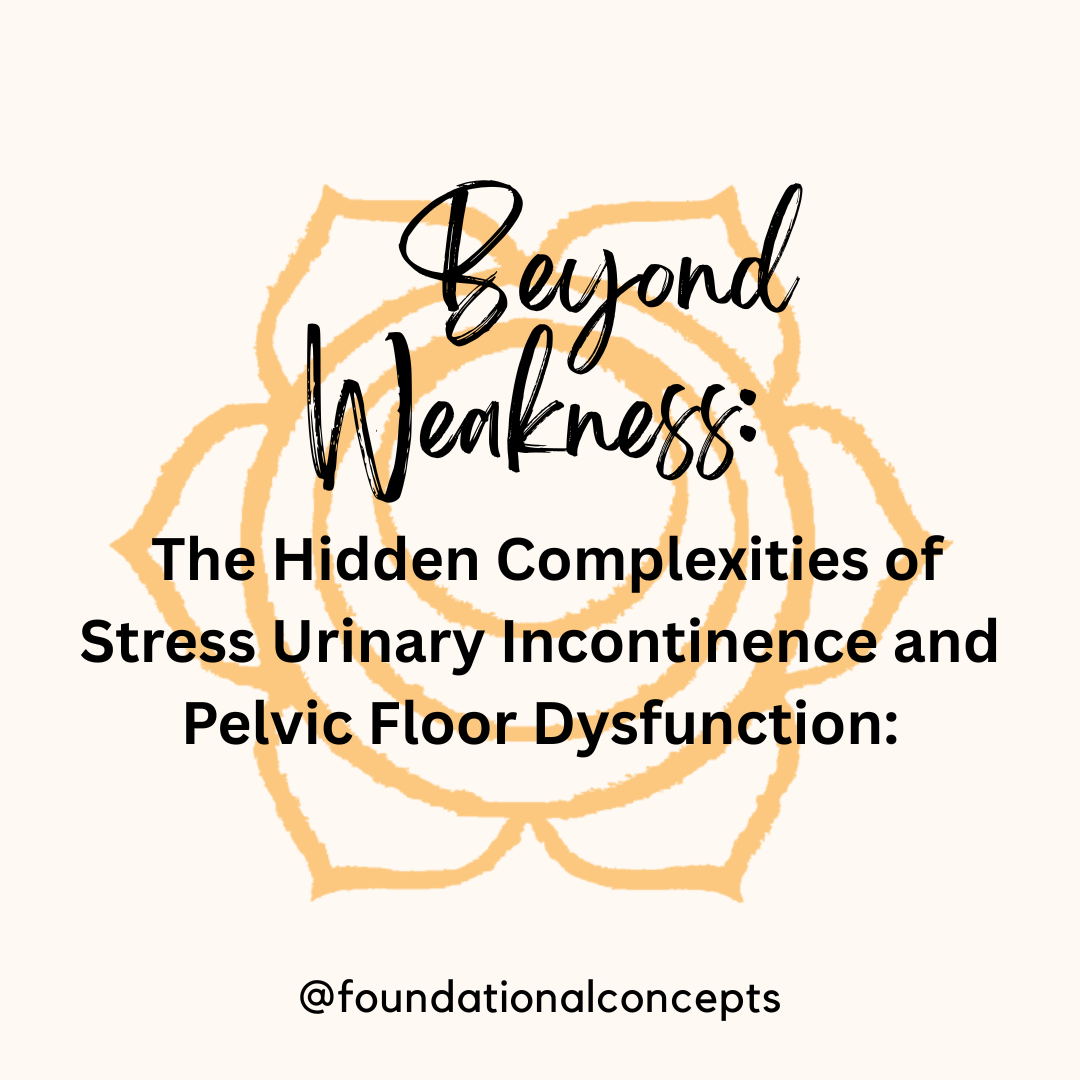
How Pelvic Floor Physical Therapy Can Help Prevent Prolapse Repair Failure
Undergoing surgery to repair a pelvic organ prolapse — such as a cystocele (bladder prolapse) or rectocele (rectal prolapse) — can be life-changing. Many women experience relief from pressure, bulging, and discomfort, and can return to activities that once felt impossible.
But what happens after surgery is just as important as the surgery itself. Which is where pelvic floor physical therapy (PFPT) comes in. At Foundational Concepts, we often tell patients that pelvic floor rehab is the missing link in successful prolapse recovery — helping protect your repair, reduce recurrence risk, and restore confidence in your body.
Why Some Prolapse Repairs “Fail”
Even with excellent surgical technique, prolapse repair can sometimes fail over time. Research shows that 30–60% of traditional (native tissue) cystocele repairs may show some anatomical recurrence within 1–2 years.
Several factors can increase this risk, including:
- Weak or poorly coordinated pelvic floor muscles
- Chronic straining (constipation, heavy lifting, coughing)
- Poor pressure management during daily activities
- Connective tissue laxity or hormonal changes after menopause
While you can’t control every factor, you can strengthen and retrain your neuro-muscular system to support the pelvic girdle — and that’s exactly what pelvic floor physical therapy does.
How Pelvic Floor Physical Therapy Helps
Pelvic floor PT focuses on restoring the strength, coordination, and endurance of the muscles that support your bladder, uterus, and rectum. But it’s not just about “doing Kegels” — it’s about retraining your body as a system.
Here’s how PFPT helps protect your repair:
🩺 1. Rebuilds Strength and Support
After surgery, the pelvic floor muscles may be weak or inhibited. Often your abdominal muscles are also inhibited and without the co-contraction of your abdominal wall you will stress the organs of the pelvis with daily tasks. A pelvic floor therapist helps you safely rebuild muscle tone and endurance to better support the repaired tissues and surrounding organs.
🌬️ 2. Optimizes Pressure Management
Everyday movements — like coughing, sneezing, lifting, or even getting out of a chair — increase pressure in your pelvic girdle. PFPT teaches you how to breathe and move efficiently to avoid excess downward pressure on the repair site. This involves retraining your entire body, but most specifically the diaphragm, abdominal wall, spinal stabilizers and the pelvic floor.
🧠 3. Improves Muscle Coordination
Many women unknowingly “bear down” instead of lifting and supporting with the pelvic floor. Biofeedback, real-time ultrasound, and guided training help you learn proper activation and relaxation patterns to protect your repair long-term.
💩 4. Addresses Contributing Habits
Your therapist will help with bowel mechanics, posture, lifting techniques, and activity modifications to reduce strain on the surgical site. Managing constipation and cough, for instance, can dramatically reduce the risk of prolapse recurrence. Understanding what to avoid at the gym or with recreational activities, and setting goals to be able to exercise and play as you would like is very important.
🧘♀️ 5. Restores Confidence and Function
PFPT isn’t just about anatomy — it’s about helping you return to the activities you love without fear of “undoing” your surgery. Whether that’s exercise, intimacy, or daily movement, therapy supports you through every stage of recovery so that you can go on doing the things you love.
The Ideal Timeline for Therapy
Pelvic floor therapy can help before and after prolapse surgery:
- Before surgery: Strengthening and learning pressure management beforehand helps create a better foundation for healing post surgically.
- After surgery: Once cleared by your surgeon (often around 6–8 weeks post-op), therapy can begin gently to retrain muscles, prevent scar restriction, and promote proper healing.
Your therapist will tailor your plan to your specific surgery, symptoms, and goals. Our plan of care is based on your specific dysfunctions and activity goals so that you are working on exactly what needs attention.
What the Research Shows
Studies support the role of pelvic floor rehabilitation in improving surgical outcomes and reducing recurrence rates. Women who engage in structured PFPT after prolapse repair show:
- Better pelvic floor muscle strength and endurance
- Fewer postoperative complications
- Improved symptom relief and quality of life
- Lower rates of anatomical recurrence and reoperation
While no therapy can guarantee prevention of recurrence, pelvic floor physical therapy is one of the most effective, low-risk tools to support long-term success.
The Bottom Line
Surgery can fix the structure — but pelvic floor therapy helps support it. If you dont change the muscular patterns that are dysfynctional you will likely just end up in the same situation after surgery, because you have not managed the muscle issues that contributed to the problem in the first place. By retraining your muscles, improving posture and pressure management, and addressing daily habits, pelvic floor physical therapy gives your repair the best chance to last.
If you’ve had prolapse surgery or are preparing for one, ask your surgeon for a referral to pelvic floor physical therapy. At Foundational Concepts, our pelvic health specialists work closely with surgeons and patients to create a personalized recovery plan that supports healing — and helps you feel strong and confident again.
References
1.Pelvic Floor Physical Therapy in the Treatment of Pelvic Floor Dysfunction in Women. Wallace SL, Miller LD, Mishra K.Current Opinion in Obstetrics & Gynecology. 2019;31(6):485-493. doi:10.1097/GCO.0000000000000584.
2. Effects on Health-Related Quality of Life of Biofeedback Physiotherapy of the Pelvic Floor as an Adjunctive Treatment Following Surgical Repair of Cystocele. Borrego-Jimenez PS, Padilla-Fernandez BY, Valverde-Martinez S, et al. Journal of Clinical Medicine. 2020;9(10):E3310. doi:10.3390/jcm9103310.
3. Peri-Operative Physiotherapy to Prevent Recurrent Symptoms and Treatment Following Prolapse Surgery: Supported by Evidence or Not?. Lakeman MM, Koops SE, Berghmans BC, Roovers JP. International Urogynecology Journal. 2013;24(3):371-5. doi:10.1007/s00192-012-1973-y.
4. Pelvic Floor Muscle Training as an Adjunct to Prolapse Surgery: A Randomised Feasibility Study. McClurg D, Hilton P, Dolan L, et al. International Urogynecology Journal. 2014;25(7):883-91. doi:10.1007/s00192-013-2301-x.
5. Impact of Pelvic Floor Muscle Training in Pelvic Organ Prolapse. Basnet R. International Urogynecology Journal. 2021;32(6):1351-1360. doi:10.1007/s00192-020-04613-w.
6. Does Pelvic Floor Muscle Training Augment the Effect of Surgery in Women With Pelvic Organ Prolapse? A Systematic Review of Randomized Controlled Trials. Zhang FW, Wei F, Wang HL, et al. Neurourology and Urodynamics. 2016;35(6):666-74. doi:10.1002/nau.22784.
7. The Effect of Preoperative Pelvic Floor Muscle Training on Urinary and Colorectal-Anal Distress in Women Undergoing Pelvic Organ Prolapse Surgery-a Randomized Controlled Trial. Mathew S, Nyhus MØ, Salvesen Ø, et al. International Urogynecology Journal. 2021;32(10):2787-2794. doi:10.1007/s00192-021-04684-3.
8. Effect of Uterosacral Ligament Suspension vs Sacrospinous Ligament Fixation With or Without Perioperative Behavioral Therapy for Pelvic Organ Vaginal Prolapse on Surgical Outcomes and Prolapse Symptoms at 5 Years in the OPTIMAL Randomized Clinical Trial. Jelovsek JE, Barber MD, Brubaker L, et al. JAMA. 2018;319(15):1554-1565. doi:10.1001/jama.2018.2827.
Disclaimer: This blog is here for your help. It is the opinion of a Licensed Physical Therapist. If you experience the symptoms addressed you should seek the help of a medical professional who can diagnose and develop a treatment plan that is individualized for you.









